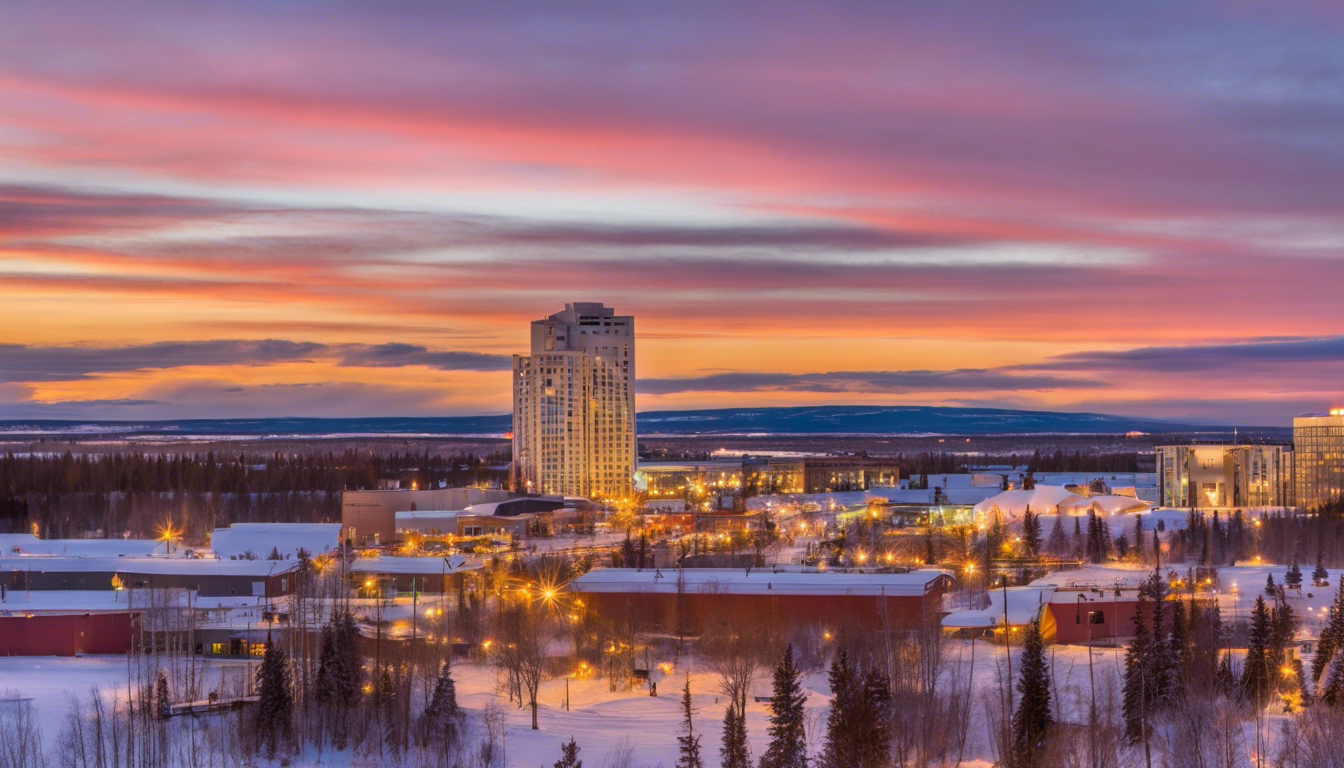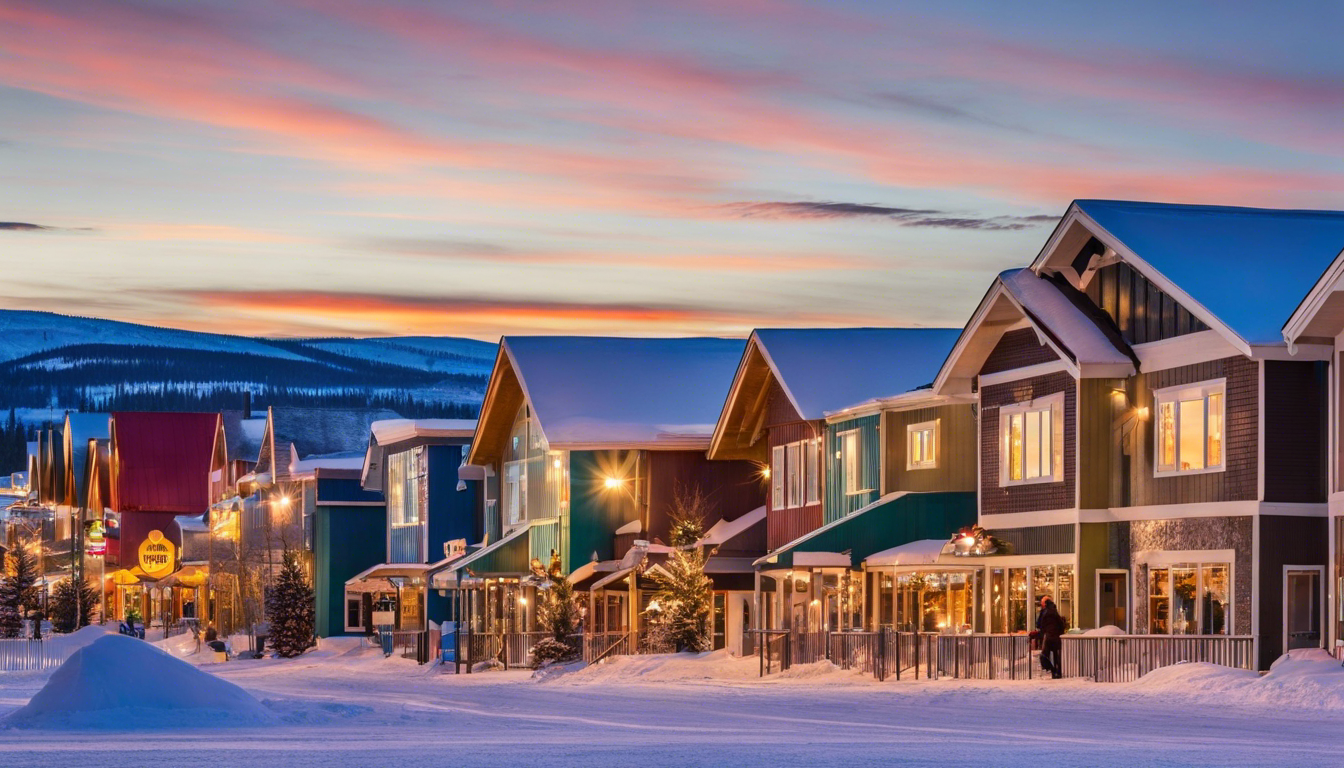Nestled in the heart of Fairbanks, the College neighborhood offers a unique blend of wilderness access and town amenities, making it an appealing choice for those seeking the Alaskan experience coupled with the conveniences of urban living. Here, the University of Alaska Fairbanks, founded in 1917 and standing as a beacon of higher education amidst the rugged landscape, boasts a faculty of 545, a staff of 2,498, and a student body of 7,425, offering a range of majors and a campus life that demands resilience and adaptation to the extreme climate. With a student-faculty ratio of 10 to 1 and more than 35,000 alumni, UAF's presence enriches the community's vibrancy and academic spirit.
Climate and Environment:
Residents and students in College must prepare for the extremes. Winter temperatures can plummet to as low as -68°F, creating a wonderland that's both beautiful and challenging. The phenomenon of ice fog is common here, where vehicle exhaust freezes, cloaking the town in a dense, icy mist. Yet, the summers bring a stark contrast with temperatures soaring into the high 80s and nearly 24 hours of daylight, offering ample opportunity for outdoor activities but also affecting sleep patterns.
Living Conditions:
The College area presents unique living conditions. With extreme cold, vehicles must be winterized, and homes, including the iconic dry cabins without running water, require innovative solutions for heating and water, often increasing living costs. Despite these challenges, the proximity to vast wilderness areas and national parks like Denali offers unparalleled access to nature and activities such as hunting, fishing, and gold panning.
Local Amenities and Activities:
Though entertainment options may seem limited, with a small mall and cinema, the community thrives with outdoor adventures and the cultural experiences offered by UAF. From trophy fishing in the summer to witnessing the mesmerizing Aurora Borealis in winter, College is a gateway to experiencing Alaska's raw beauty.
Cost of Living:
Living in College, Fairbanks, comes with a high cost of living, especially concerning food and fuel. However, the absence of state income taxes and a property tax rate averaging 1.47% offer some financial reprieve. Housing, while below the national average, still requires careful financial planning, with the average home price around $278K. The 2021 Fairbanks Metropolitan Statistical Area statistics highlight a median household income of $78,321 and a median property value of $245,700, reflecting the economic conditions of the area.
Adapting to College Life:
Adapting to life in College, particularly for students at UAF, involves embracing the extreme weather, from the harsh winters with limited daylight to the endless summer days. The community, described as conservative with a significant number of government jobs, values space, privacy, and a connection to nature, offering a lifestyle that's both challenging and rewarding.
College, Fairbanks, is not just a place to live or study; it's an experience that molds resilience, independence, and a profound appreciation for the natural world. Whether you're moving here for education or seeking a life amidst Alaska's wilderness, College offers a blend of challenges and rewards that are uniquely Alaskan.
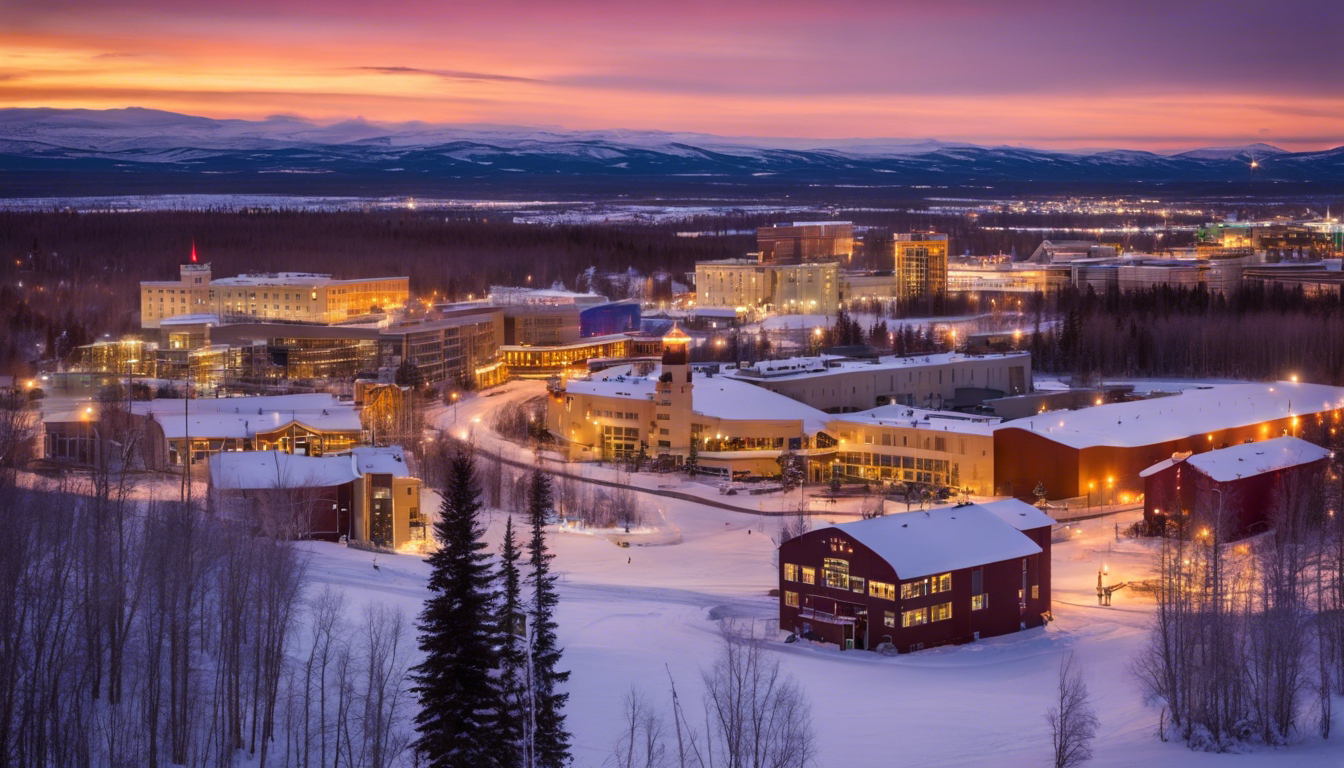
Ester: Where Art and Community Thrive
Ester, a small neighborhood on the outskirts of Fairbanks, is a vibrant community where art and a strong sense of togetherness define its character. Unlike the more wilderness-focused areas of Fairbanks, Ester offers a cultural oasis that attracts artists, musicians, and those who appreciate a tight-knit community vibe. With a 2020 population of 2,416, Ester is a census-designated place rich in history, founded as a gold mining camp in the early 1900s, and now known for its vibrant art scene, annual music festivals, and a unique Fourth of July parade.
Climate and Environment:
Much like the rest of Fairbanks, Ester experiences the extremes of Alaskan weather, from the deep cold of winter to the endless days of summer. These conditions have fostered a community that values warmth not just in their homes, but in their relationships with neighbors, making it a welcoming place for newcomers seeking solace in the beauty of Alaska. Ester has a subarctic climate, with record temperatures ranging from -58°F to 92°F, contributing to its unique living conditions.
Artistic and Cultural Hub:
Ester is renowned for its artistic flair, hosting numerous events that draw people from all over Fairbanks. The neighborhood is dotted with galleries, studios, and venues that showcase local talent, fostering a culture of creativity and expression. This creative spirit is a cornerstone of Ester's identity, making it a place where art is not just observed but lived.
Community and Lifestyle:
The residents of Ester take pride in their community-centric lifestyle. Here, it's common to know your neighbors, participate in local events, and contribute to communal projects. This strong sense of community is a draw for those looking to escape the isolation often associated with more remote Alaskan living.
Natural Beauty and Outdoor Activities:
Surrounded by the breathtaking landscapes of interior Alaska, Ester provides ample opportunities for outdoor enthusiasts. From hiking and biking in the summer to skiing and snowshoeing in the winter, the area around Ester is a playground for those who love to explore the great outdoors.
Cost of Living and Accessibility:
While Ester shares the higher cost of living found throughout Fairbanks, especially in terms of food and fuel, its community-driven approach offers unique opportunities for cost-sharing and support. The neighborhood's location also provides a balance between seclusion and accessibility, with Fairbanks just a short drive away. In 2021, the estimated median household income was $62,446, with a median house or condo value of $268,497, reflecting the economic conditions of the area.
Ester is more than just a place to live; it's a community where art, culture, and a shared sense of purpose create a unique and enriching lifestyle. For those drawn to the arts and looking for a place where community and creativity thrive, Ester offers a warm welcome amidst the stunning backdrop of Alaska's wilderness.
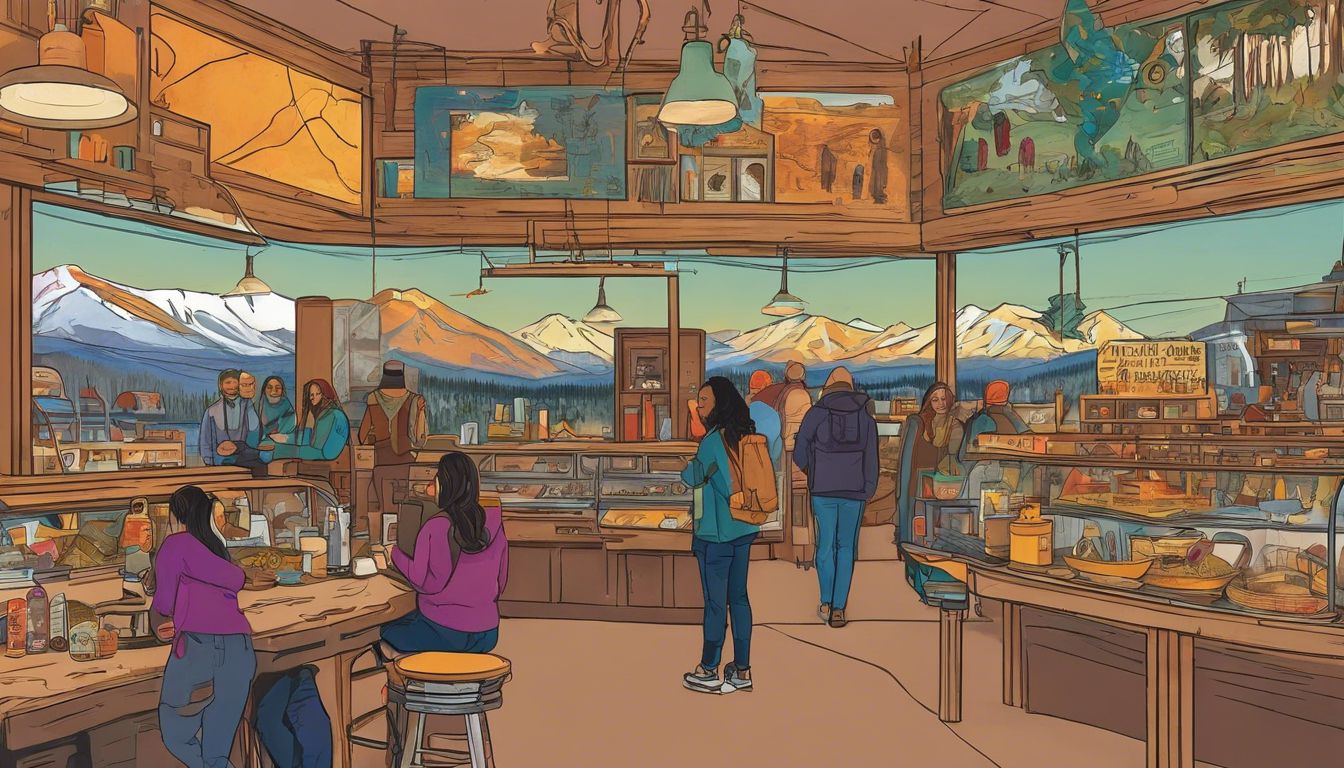
North Pole: The Name Says It All
In the heart of Alaska, a few miles from Fairbanks, lies the enchanting city of North Pole, a place where the spirit of Christmas thrives year-round. With street names that echo the holiday season and the iconic Santa Claus House, North Pole offers a unique charm that captivates both residents and visitors. Despite its festive allure, living in North Pole is an exercise in resilience and adaptation to extreme conditions.
Climate and Environment:
The winters in North Pole are nothing short of brutal. Temperatures can plummet to a chilling -40°F, and on the coldest days, reach -60°F. This extreme cold poses risks but also forges a community of hardy souls who continue outdoor activities, proving the resilience of the human spirit against nature's challenges. Summers flip the script with hot, dry conditions, offering a stark contrast to the winter's freeze.
Living Conditions:
North Pole's economy has felt the impact of the partial closure of the Flint Hills oil refinery, once a significant contributor to the local economy. Coupled with one of the highest rates of gun ownership in the U.S., driven by practical needs for hunting and protection, life here blends modern challenges with the age-old call of the wild. The town's population, at 2,825 in 2021, enjoys a simple lifestyle with basic amenities that foster a close-knit community atmosphere. Source
Local Amenities and Activities:
Despite its remote location and the harsh weather, North Pole is not devoid of amenities and activities. From local stores to fast food, the town caters to the basic needs of its residents. The outdoor lifestyle is robust, with children playing outside even in the coldest months, and adults engaging in hunting, fishing, and enjoying the natural beauty that surrounds this unique town.
Cost of Living:
Living in North Pole is marked by the challenges of extreme weather, which can influence the cost of living, particularly in terms of heating and winterizing homes and vehicles. However, the community's simplicity and the absence of state income tax in Alaska offer some financial relief. The median property value stood at $232,200 in 2021, marking a 4.41% growth. Source
Community Spirit:
The spirit of North Pole is best encapsulated in its Christmas theme, a tradition that traces back to a generous trader named Miller, known as "Santa" for his habit of giving gifts to local villages. This legacy of giving and community continues to define North Pole, making it a remarkable place to live despite its climatic and economic challenges.
North Pole, with its unique blend of extreme weather, economic resilience, and unwavering community spirit, offers a lifestyle unlike any other. It's a town where the magic of Christmas lives all year round, and the strength of its people shines brightest in the coldest of winters. Whether drawn by the allure of the holiday spirit or the call of the Alaskan wilderness, North Pole stands as a testament to the enduring human spirit in the face of nature's extremes.
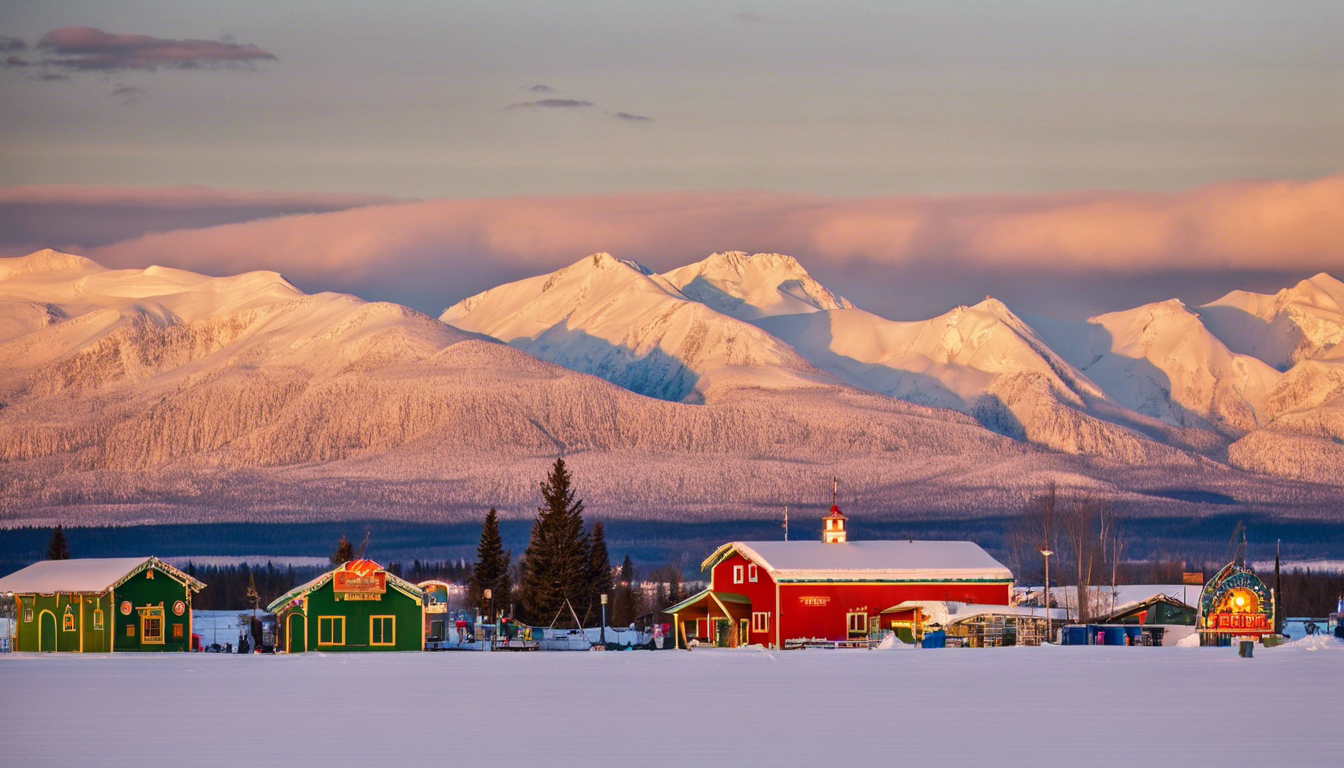
Badger: Big and Welcoming
Nestled a short drive from Fairbanks, Badger offers a slice of Alaskan life that's as vast in spirit as the land itself. This neighborhood is known for its big, welcoming heart and a community that thrives in the face of the unique challenges presented by the Alaskan wilderness.
Climate and Environment:
The residents of Badger experience the full spectrum of Alaskan weather, from the long, sun-filled days of summer to the deep, dark winters where temperatures can plummet to -40 degrees. This extreme climate shapes not just the lifestyle but also the resilient character of the community.
Community Spirit:
In Badger, the sense of community is palpable. It's a place where neighbors know each other, doors remain unlocked, and a helping hand is never far away. This small-town feel fosters a tight-knit atmosphere that's increasingly rare, making it a cherished aspect of daily life here.
Wildlife and Nature:
Living in Badger means being in close proximity to nature's wonders and its wild inhabitants. The neighborhood is a gateway to experiencing Alaska's famed wildlife, from brown bears to wolves, and the majestic Sockeye salmon run. These encounters remind residents of the beauty and the raw power of the natural world at their doorstep.
Economic Considerations:
The reliance on imported goods underscores a vulnerability in Badger's supply chain, a common challenge in many Alaskan communities. Yet, this dependence also fosters a spirit of innovation and adaptability among residents, who are well-versed in preparing for the unexpected.
A Love for the Land:
Despite the challenges—from the harsh winters to the long days of summer—residents express a profound love for their home in Badger. It's a sentiment rooted in the unique beauty, the community, and the lifestyle that defines living in this part of Alaska. This deep connection to their environment and to each other makes Badger not just a place to live, but a place to thrive.
Statistics to Paint the Picture:
In 2021, Badger was home to 19,226 residents, evidencing a slight decrease in population by 1.07% from the previous year. The median age of its inhabitants was 32.9, reflecting a youthful and vibrant community source. The economic landscape showed a median household income of $89,375, albeit with a slight decline of 3.77%. Despite these economic shifts, the spirit of resilience and innovation remains undiminished, with a notable 78.4% homeownership rate and a median property value of $236,300, marking a growth of 2.21%.
The demographics reveal a diverse tapestry with a majority of 74.6% White (Non-Hispanic), followed by American Indian & Alaska Native (Non-Hispanic) at 6.77%, showcasing the rich cultural heritage of the area. The community's dedication to their land is evident in the 98.2% U.S. citizenship rate among residents.
Employment sectors such as Construction, Health Care & Social Assistance, and Public Administration play pivotal roles in the local economy, with a significant number of military personnel highlighting the community's connection to national service. Despite a 3.63% decline in employment, Badger's spirit of adaptability and resilience shines through, setting an example of thriving against the odds.
Badger represents the quintessential Alaskan experience—a community that's both rugged and warm, where the challenges of the environment are met with resilience and a spirit of camaraderie. It's a testament to the enduring appeal of life in the Last Frontier.
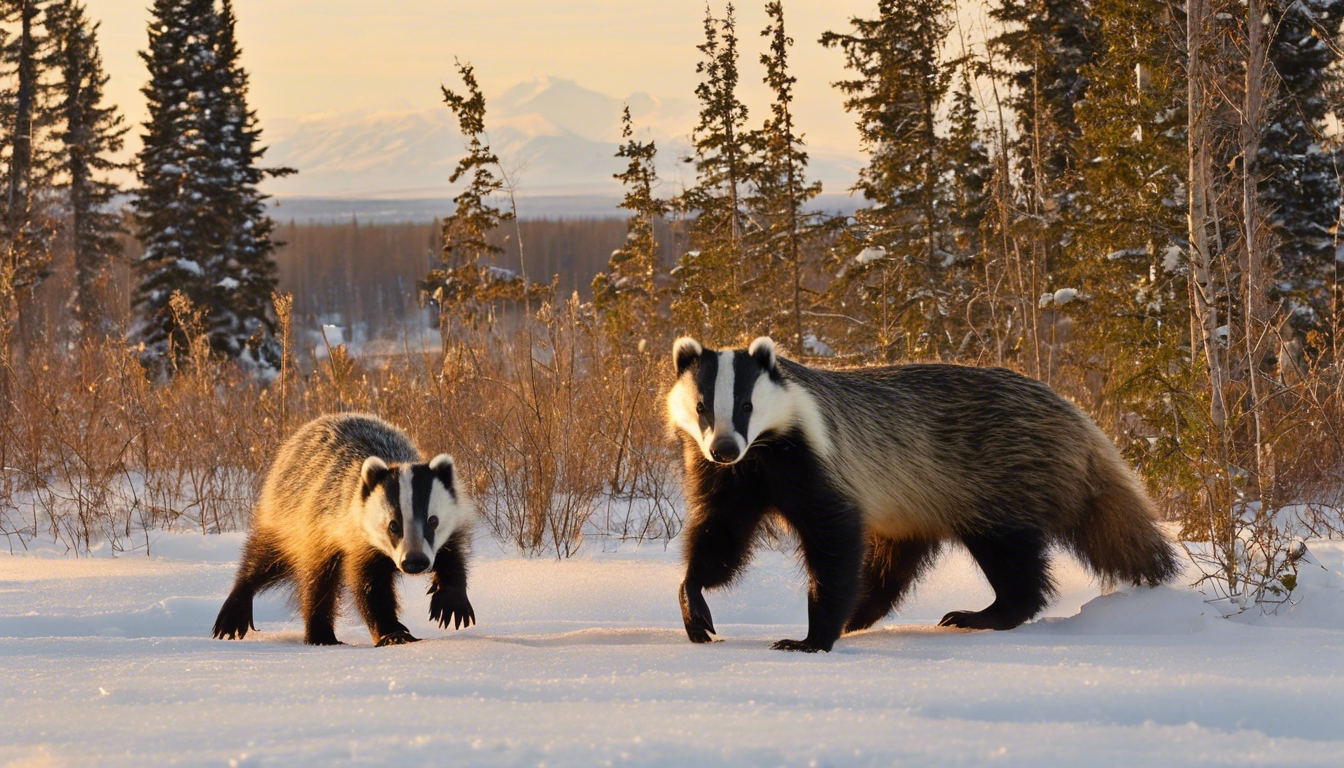
Fairbanks: The Heart of It All
Fairbanks, often referred to as the heart of the Alaskan interior, presents a unique blend of challenges and opportunities that make it a compelling place to live. This city, with a population of 33,018 in 2021, marking a 5.06% increase from the previous year, encapsulates the rugged beauty and extreme conditions that define Alaska. Winter in Fairbanks is a phenomenon unto itself, with temperatures that can plunge to a breathtaking -80°F, while summer brings a stark contrast, with temperatures reaching the high 80s and almost 24 hours of daylight, which can disrupt sleep without proper shades. The city is enveloped in ice fog during winter months, significantly reducing visibility and adding an element of mystique to daily life.
Adapting to Extreme Weather:
Residents must adapt their lifestyles and homes for these extreme conditions, from winterizing vehicles to using 50-foot extension cords to prevent engine freeze. Yet, it's these very conditions that foster a strong sense of community and resilience among the locals.
Economic and Cultural Landscape:
The local economy may seem limited at a glance, with a small mall and cinema, but Fairbanks is rich in outdoor activities like hunting, fishing, and gold panning, drawing those with a love for adventure. The University of Alaska Fairbanks is a hub of educational opportunities, enhancing the city’s cultural fabric with a symphony orchestra, theater groups, and arts festivals. Despite the high cost of living due to expensive food and higher taxes on goods and services, housing prices remain below the national average, with an average home price around $278,000.
Challenges and Rewards:
Living in Fairbanks comes with its set of challenges, including a frontier town feel that juxtaposes upscale areas with more rundown sections, and the remoteness that places it far from other towns. Political and governance issues, along with nuisances like mosquitoes and summer smoke from fires, are part of the package. Yet, for many, these challenges are outweighed by the unique lifestyle and natural beauty that Fairbanks offers.
Fairbanks vs. Anchorage:
For those torn between living in Fairbanks or Anchorage, Fairbanks offers distinct advantages, including closer access to outdoor recreational activities and a more rural lifestyle. Surrounded by wilderness areas like the Chena River State Recreation Area, Fairbanks provides ample opportunities for hiking, fishing, hunting, skiing, and snowmobiling, fostering a tight-knit community and a slower pace of life. The vibrant cultural scene, highlighted by institutions like the University of Alaska Museum of the North, adds to the allure of living in Fairbanks, despite the significant extra drive time to Anchorage.
With a median age of 28.2, reflecting a 1.08% increase over one year, and a poverty rate at 9.12%, showing a 1.68% decrease, Fairbanks' demographic and economic statistics underscore the city's resilience and adaptability. The median household income of $66,572, up by 3.38%, and a median property value of $223,600, increasing by 2.71%, highlight the evolving economic landscape. Fairbanks, with its unique blend of challenges and rewards, stands as a testament to the rugged, independent spirit of Alaska, offering a lifestyle unlike any other, deeply connected to the natural world and the community that calls it home.
Source: Data USA - Fairbanks, AK
